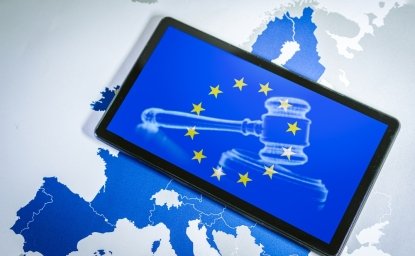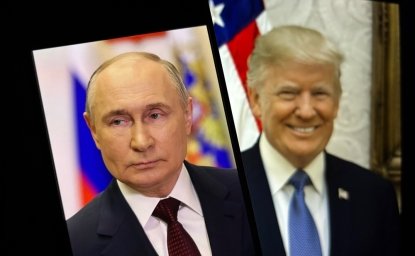198. The Lessons of Inter-War Independence for Contemporary Latvia

Following the collapse of the Soviet Union, the Baltic Republics of Estonia, Latvia and Lithuania found themselves caught between the experiences of Eastern Europe and the former Soviet Union. Unlike Warsaw Pact states, the Baltic States did not maintain a degree of independence following World War II. Unlike the Soviet Socialist Republics, however, the Baltic States were independent nation-states in the inter-war period.
In the late 1980s, the Baltic Popular Fronts drew on the collective memory of the inter- war years for strength. They similarly drew on the legal precedent of independence and occupation (and the U.S. non-recognition of incorporation) for legitimacy, support and international recognition. These memories and the precedents serve as an equally appropriate prism through which to view the problems and successes of a new state, both in the 1920s and 1930s and in the 1990s.
There are broad parallels between the two time periods and several anecdotal similarities. The lessons, however, are not simple repeatable steps. Seven major parallels are addressed: the struggle for independence; international relations; how to guarantee independence; economic restructuring; political culture; socio-cultural trends; and, demographic developments.
A precondition for Latvian independence in 1918 and in 1991 was the collapse of the empire, whether it be tsarist or soviet. Without the complete weakening and collapse of central power, it is difficult, if not impossible, to imagine Latvia's peaceful or successful secession. More troubling are the similarities in the West's response to Latvian independence. By supporting White generals and Mikhail Gorbachev, Western Europe (and notably the United States) supported a Russia "one and indivisible" for an embarrassingly long time. Balancing this lack of official support, however, was crucial material (if unofficial) support from 1918 to 1922, and in the late 1980s and early 1990s.
The most pressing parallel to contemporary Latvia therefore becomes the guarantee of independence. If in the 1920s and 1930s, Western Europe assumed Baltic independence to be a seasonal phenomenon, how can independence be guaranteed today? The first 'solution' is a more comprehensive economic, political and military union with Estonia and Lithuania. Latvia in the 1990s has taken concrete steps towards a Baltic Union that was unimaginable in the 1920s or 1930s, including a Baltic Parliament, Council of Ministers, Free Trade Union, joint Baltic Battalion and a military college. Latvia, however, sees the Baltic Union as a litmus test for joining the European Union. Latvia's ultimate goal for a solution to its international survival is inclusion in the European-Atlantic framework of the European Union and NATO.
The economic and political parallels between Latvia in the inter-war years and the present focus on the problems of state building. In both time periods, prior to independence, Latvia was part of an imperial economic system that lacked a democratic political mechanism. With independence, Latvia needed to drastically restructure and reorganize its national economy as well as develop a political democracy.
Economic parallels are more tenuous. In the 1920s, Latvia's rapid transformation to an overall agriculturally-based economy was successful. Today, agriculture cannot be the driving force behind Latvia's economy. Latvian industry in the 1990s, like in the 1920s, has had to adjust to the collapse of Russian markets and sources of resources. Generally, however, the contemporary adjustment has been much more successful. Coupled with transit trade, Latvia's economy showcases modern sectors - such as computer programming, pharmaceuticals, fiberglass, banking and tourism - that were absent in the 1920s and 1930s. A continuing weakness, however, is Latvia susceptibility to "external shocks." The Great Depression and the Russian economic crisis of 1998 underscore this parallel.
There are superficial and profound political parallels between the 1920s and 1990s. Latvia seemed to return to its chronic inter-war problem of many political parties and weak government coalitions. Electoral laws however, have been reformed to include a 5% barrier that limits the number of parties in parliament. The current parliament has only six parties (a record low). Coalitions continue to be weak and politics divisive, but within the expected range for a transition-stage country.
More troubling is Latvia's penchant for statist solutions. In the 1930s, a contributing factor to the authoritarian coup of 1934 was the political culture that stressed statist solutions. Although at present the government in Latvia continues to shrink, the 'strong man' and 'unified action' ideas have considerable popular support. Civil society remains as weak in the post- communist era as it was in the inter-war period.
The most striking demographic trend throughout the twentieth century in Latvia is that demographic swings have had 'external' roots. World War I bequeathed to the new state a demographic disaster in deaths and de-urbanization. World War II brought the 'repatriation' of the historic Baltic German community, the Holocaust to the historic Jewish community along with war deaths and considerable refugee flight to the West. The establishment of Soviet rule brought mass deportations, executions and the arrival of hundreds of thousands of Slavic workers for Soviet industrialization plans.
The demographic question touches upon parallels in minority rights. The greatest difference, of course, is that in the 1920s and 1930s Latvia was dominated by Latvians, but with many sizeable minority communities (Russians, Baltic Germans, Jews, Poles, Belorussians). Today, Latvia is much more dichotomous - Latvians outnumber the large, primarily Russian minority only by a very slight edge, constituting a total majority of 57%. Surprisingly, minority rights may be more protected today than in the past. In the 1920s and 1930s, as Latvia slid towards authoritarianism it also increasingly disregarded minority rights. Currently, the opposite trend is apparent. Latvia began the early 1990s by restricting minority rights, but has tenuously proceeded to mollify citizenship laws. The desire for EU membership is a particularly significant factor. On the one hand, the need to appease the EU encourages politically difficult solutions. On the other, future membership in the EU would diminish the role of ethnic politics generally.
Finally, if the parallel question to the inter-war era is how is Latvia doing eight years after independence, the answer is elusive. In the 1990s, Latvia fortunately did not have to contend with the devastation, death and destruction of a calamitous war. Reconstruction in the 1920s entailed much more than in the 1990s. For this reason, Latvia in the 1990s is further along in democratization and economic reconstruction than in 1926. If, however, one considers the relative amount of improvement in those earlier years, it does begin to seem as if more was accomplished in the 1920s. The hoped-for parallel would be that, like in the inter-war years, Latvia enters its golden age roughly about eight years after independence.
Aldis Purs spoke at an EES Noon Discussion on November 17, 1999
Author

Global Europe Program
The Global Europe Program is focused on Europe’s capabilities, and how it engages on critical global issues. We investigate European approaches to critical global issues. We examine Europe’s relations with Russia and Eurasia, China and the Indo-Pacific, the Middle East and Africa. Our initiatives include “Ukraine in Europe”—an examination of what it will take to make Ukraine’s European future a reality. But we also examine the role of NATO, the European Union and the OSCE, Europe’s energy security, transatlantic trade disputes, and challenges to democracy. The Global Europe Program’s staff, scholars-in-residence, and Global Fellows participate in seminars, policy study groups, and international conferences to provide analytical recommendations to policy makers and the media. Read more

Explore More
Browse Insights & Analysis
360° View of How Southeast Asia Can Attract More FDI in Chips and AI

The Growing Transatlantic “Big Tech” Rift Explained

Mapping Undersea Infrastructure Attacks in the Baltic Sea
